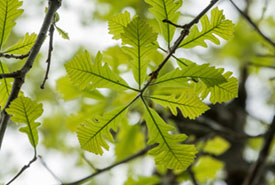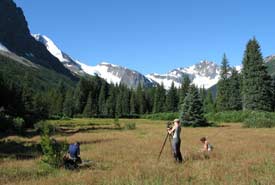A partnership building hope for communities and a thriving natural world

The Keyhole, NB (Photo by Brainworks)
World Wetlands Day on February 2 is an opportunity to highlight the importance of wetlands and the value they provide. Canada is home to over a quarter of the world’s wetlands, and it is estimated that 70 per cent of wetlands in southern Canada have been lost due to development. Across Canada, The Nature Conservancy of Canada (NCC) is partnering with individuals and organizations across Canada to protect these vital and vulnerable ecosystems.
When you think of wetlands, what comes to mind? Perhaps a flooded forest, a bog, or a saltwater marsh on the coast. Although you might just think that all wetlands look the same, these areas where water covers the soil, seasonally or permanently come in many varieties. These ecosystems are rich habitat which supports diverse animals and plants — and also benefit people and communities. Wetlands filter water, store carbon and help with resiliency against climate change. Flooding can be minimized by wetlands storing excess water.

Feuilles de chêne à gros fruits, The Keyhole, N.-B. (Photo CNC)
Working on the Wolastoq (Saint John) River
Intact Financial Corporation is investing in nature by supporting NCC’s nationwide wetland conservation efforts. This partnership focuses on delivering nature-based solutions to adapt to climate change by building resilient communities. Intact helps customers recover from extreme weather events and sees the impacts of climate change first-hand.
In New Brunswick, these projects include important work in the Wolastoq (Saint John) River Valley Watershed – Atlantic Canada’s largest watershed.
Throughout 2024, NCC staff completed stewardship work across multiple NCC sites in the Wolastoq watershed, with staff removing garbage, controlling the spread of invasive species, and managing visitor use of the land.
- The Keyhole Nature Reserve received updated signage, and staff monitored species, including bur oak, which was recently planted. Once common in the old-growth floodplains of the watershed, bur oak in New Brunswick is now found only in isolated pockets, including at The Keyhole. These trees, some over 200 years old, are rare and genetically distinct from the species in other parts of eastern Canada. The forest and wetlands of The Keyhole, located on Grand Lake, help capture and hold water which lessens the effects of seasonal flooding in the region.
- At the Lincoln Wetland Natural Area, NCC staff planted hundreds of trees, installed fencing and continued work to restore fields to forest. Together with volunteers, a bridge was replaced, reopening hiking trails to the public. Lincoln Wetland, near Fredericton, features a floodplain forest with silver maple, basswood and endangered butternut tree.

Bridge repair at Lincoln Wetlands, NB (Photo by Mike Sinclaire/NCC Staff)
Through Intact’s partnership, NCC is working to strengthen the resiliency of these landscapes, benefitting the wildlife who depend on the Wolastoq watershed and making local communities more resilient and climate proof. NCC’s large-scale approach, with over 900 projects across Canada protecting more than 160,000 hectares of wetlands, is building hope for a thriving natural world for all.


